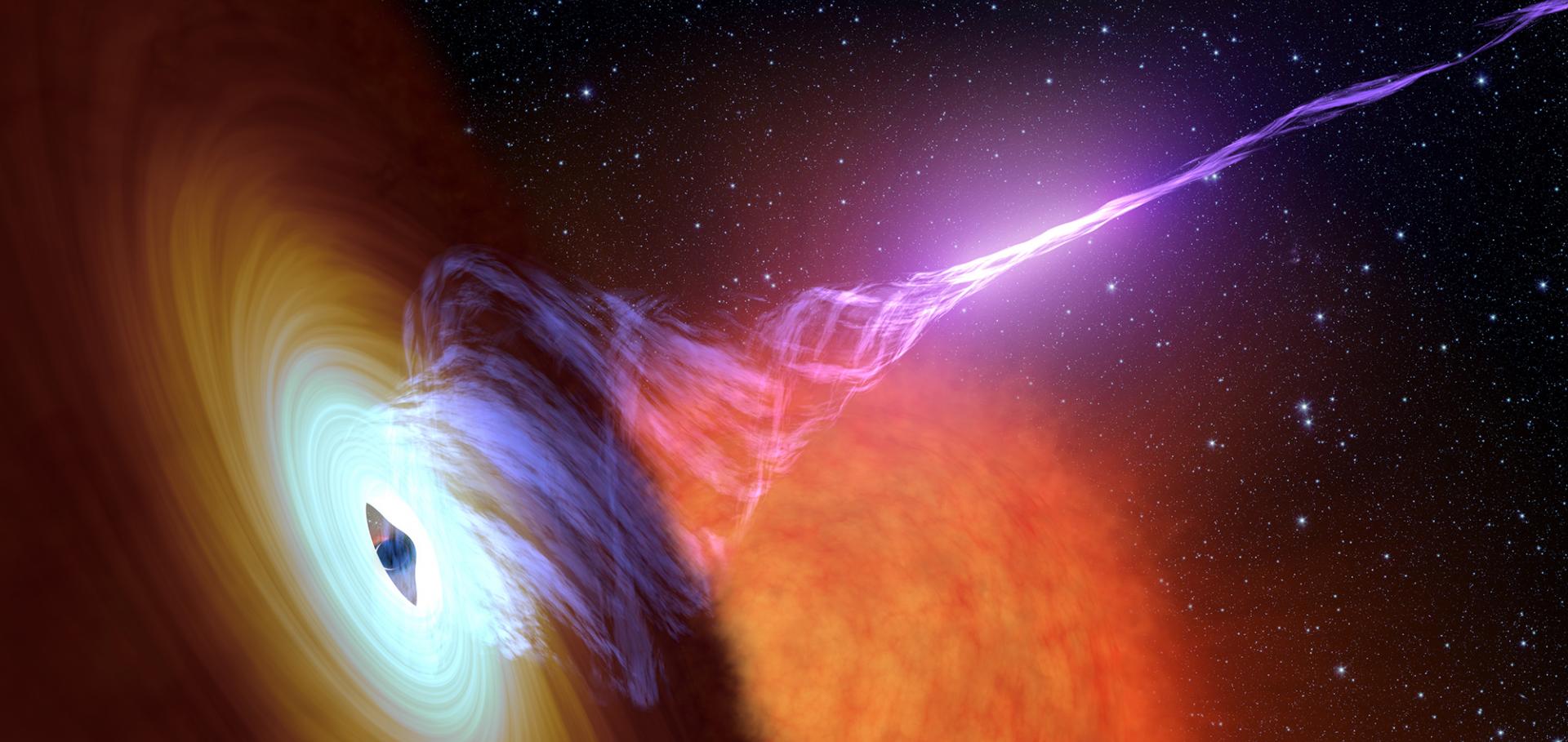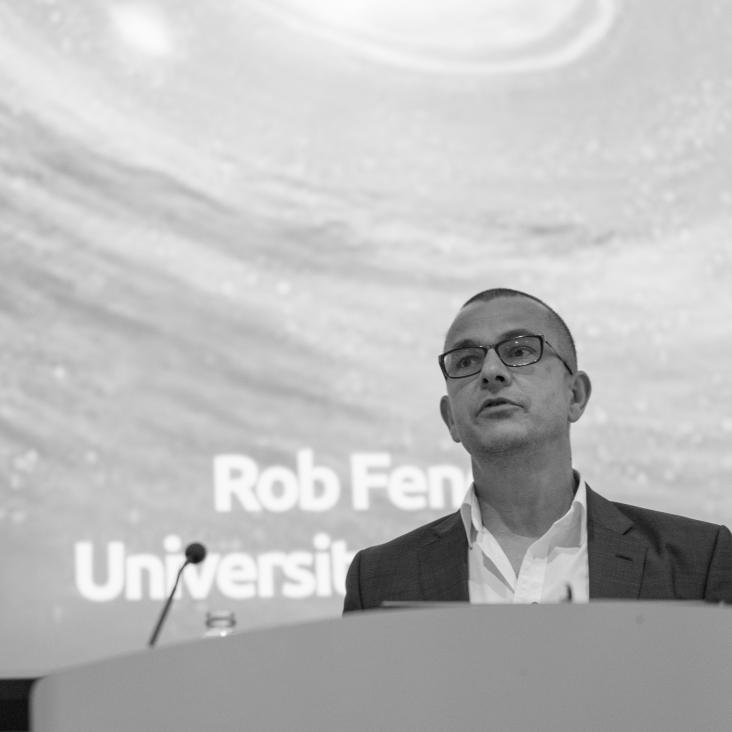A wildly flickering jet in the black hole X-ray binary MAXI J1535-571
(2018)
On the optical counterparts of radio transients and variables
Monthly Notices of the Royal Astronomical Society Oxford University Press 479:2 (2018) 2481-2504
Abstract:
We investigate the relation between the radio (Fr) and optical (Fo) flux densities of a variety of classes of radio transients and variables, with the aim of analysing whether this information can be used, in the future, to classify such events. Using flux density values between 1 and 10 GHz and the optical bands V and R, we build a sample with a total of 12 441 Fr and Fo measurements. The sample contains both Galactic objects, such as stellar sources and X-ray binaries, and extragalactic objects, such as gamma-ray bursts and quasars. By directly comparing the two parameters, it is already possible to distinguish between the Galactic and extragalactic populations. Although individual classes are harder to separate from the Fr − Fo parameter space to a high accuracy, and can only provide approximations, the basic approach provides an already useful foundation to develop a more accurate classification technique. In addition, we illustrate how example objects from different classes move in the parameter space as they evolve over time, offering a feature that could be used to reduce the confusion between classes. A small, blind test of the classification performance is also undertaken using a catalogue of VLA FIRST transient and variable sources, to demonstrate the advantages and current limitations of the approach. With more multiwavelength data becoming available in the future, we discuss other classification techniques which the Fr − Fo method could be combined with and potentially become an important part of an automatic radio transient classification system.On the optical counterparts of radio transients and variables
(2018)
Radio-loudness in black hole transients: evidence for an inclination effect
Monthly Notices of the Royal Astronomical Society Oxford University Press 478:4 (2018) 5159-5173
Abstract:
Accreting stellar-mass black holes appear to populate two branches in a radio:X-ray luminosity plane. We have investigated the X-ray variability properties of a large number of black hole low-mass X-ray binaries, with the aim of unveiling the physical reasons underlying the radio-loud/radio-quiet nature of these sources, in the context of the known accretion–ejection connection. A reconsideration of the available radio and X-ray data from a sample of black hole X-ray binaries confirms that being radio-quiet is the more normal mode of behaviour for black hole binaries. In the light of this we chose to test, once more, the hypothesis that radio-loudness could be a consequence of the inclination of the X-ray binary. We compared the slope of the ‘hard-line’ (an approximately linear correlation between X-ray count rate and rms variability, visible in the hard states of active black holes), the orbital inclination, and the radio-nature of the sources of our sample. We found that high-inclination objects show steeper hard-lines than low-inclination objects, and tend to display a radio-quiet nature (with the only exception of V404 Cyg), as opposed to low-inclination objects, which appear to be radio-loud(er). While in need of further confirmation, our results suggest that – contrary to what has been believed for years – the radio-loud/quiet nature of black-hole low-mass X-ray binaries might be an inclination effect, rather than an intrinsic source property. This would solve an important issue in the context of the inflow–outflow connection, thus providing significant constraints to the models for the launch of hard-state compact jets.Radio-loudness in black hole transients: evidence for an inclination effect
(2018)


